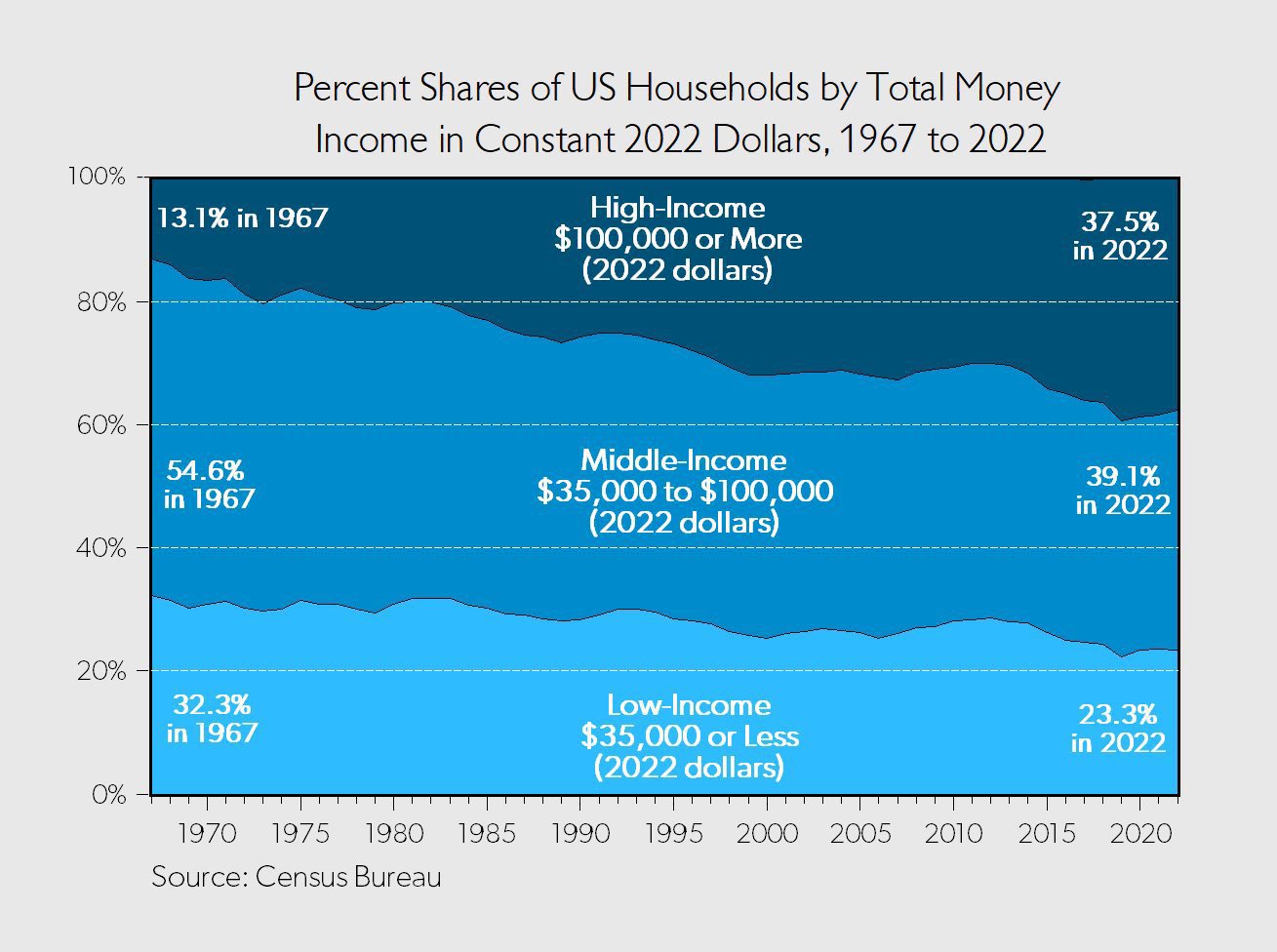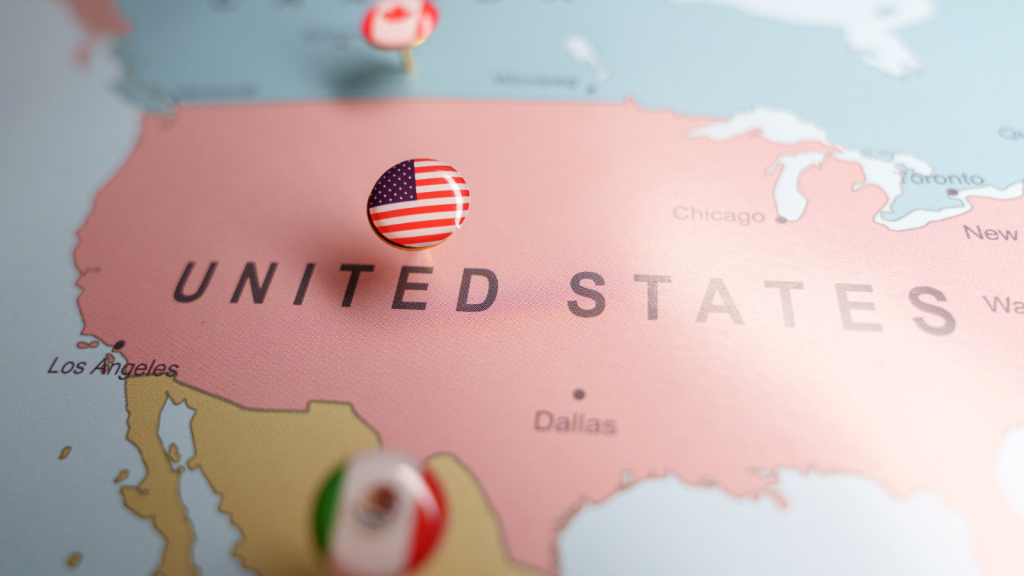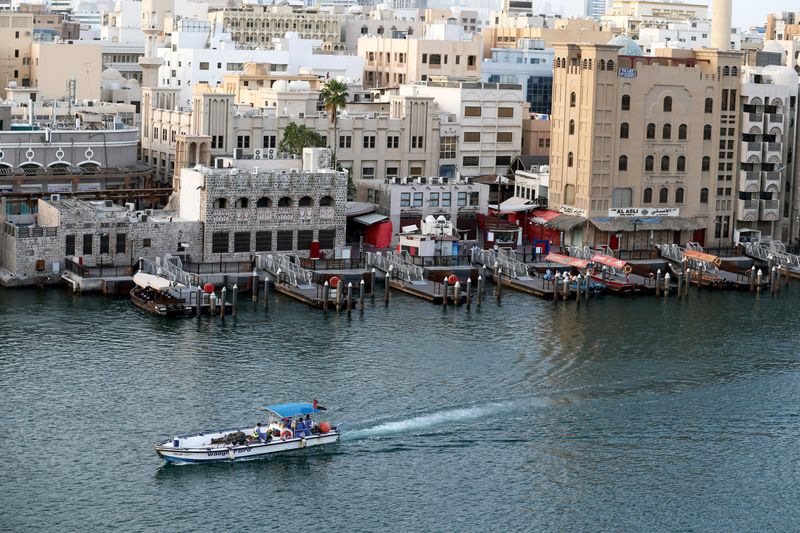The digital nomads and wealthy retirees moving to super-luxe residential megayachts for a neverending cruise
The World and a slew of other residential megayachts travel the high seas in high style, year-round.

In 2019, the Italian artist Maurizio Cattelan created Comedian, a series of three identical pieces, each consisting of a fresh banana diagonally duct-taped to a wall. One is at the Guggenheim. Another was devoured by cryptocurrency platform founder Justin Sun, who paid $6.2 million for the fruit-based artwork at a Sotheby’s auction last November.
And the third was on display at Fredy’s Deli, the café aboard The World, in January when I visited the super-luxe residential megayacht. The C-suiters, surgeons, real estate tycoons, and tech innovators who live—at least for some months of the year—on the 644-footlong ship can gaze at the controversial conceptual artwork on their way to grab one of Fredy’s excellent smashburgers.
I prodded for the identity of Comedian’s owner, but Robin Edwards, a retired corporate attorney and chairwoman of The World’s sales and marketing committee, wasn’t biting. Privacy is paramount for the owners of the ship’s 165 residences, which range from 300-square-foot studios to a spacious three bedroom apartment currently listed at $12.5 million.
I had joined Robin and her husband, Rich, a Navy veteran and retired investment banker, at the ship’s Asian restaurant, East, during a three-night trip from San Diego to Cabo San Lucas. Rich wore gray on gray (Venetian shirt, Marseilles blazer) and a mustache to match. Robin was in a lotus-print blouse from Hawaii and had just had the sleeves taken in by the onboard tailor. They both turned 77 last year, and were sitting so close together it looked like they were holding hands under the table.
I’d like them to be my grandparents, and not just because they have a spare bedroom in the two-bed, two-bath they bought in 2015. While they have a home in the Bay Area (a residency on land is required for tax purposes) and visit their kids and grandkids in Virginia and Connecticut, they spend most of their time on The World.
“It’s the easiest way ever to travel,” Robin explained over king salmon sashimi and Alsatian Riesling at East. “You don’t have to pack and unpack. You can come and go as you please.” The ship, which launched in 2002, sets its route annually, roaming from standard cruise stops such as Alaska and the Bahamas to far-flung ports in Namibia, Vanuatu, and Antarctica. Rich, an amateur photographer, chronicles the couple’s journeys on a delightful dad blog, Where in the World Is Riccardo?
But life on The World is about much more than the ship’s glamorous destinations. Residents get
to know their “neighbors” at wine tastings, poker tournaments, and lectures on filmmaking, archaeology, and geopolitics. Some 25% have had a home on board for a decade or more. “You come for the itinerary and stay for the community,” Robin said. “In terms of aging and longevity, one of the most important things is having a social life.”
“And getting physical activity,” Rich added. The only regulation-size tennis court at sea unfurls in Pacific blue resin on the top deck, ringed with a walking track. The ship’s staff includes Pilates instructors, personal trainers, and (should a back be thrown out while kayaking in French Polynesia) a physical therapist. At the spa and salon, residents can have their skin resurfaced, knots kneaded out, beards groomed, and love handles laser-sculpted away.
The ship attracts well-heeled retirees, with the average age in the sixties, owing to prices that track high end apartments in New York and London (plus a maintenance fee based on residence square footage). But owners range in age from 22 to 95 and are getting younger on average thanks to the Starlink satellite Wi-Fi and the ascendance of digital nomads and remote work.
Prospective owners typically come to The World through personal referrals or via the high-end villa specialist Exclusive Resorts, whose members spend more than 1,200 nights a year aboard its four residences. The Edwardses did six exploratory sailings, then took the plunge and bought their own apartment on board.
In its more than two decades at sea, no real competitor has risen to challenge The World’s dominance in its niche. That’s not for any lack of startups trying to get afloat. As COO of The World for six years, Alain Gruber watched many would-be competitors’ ambitious proposals for residential megayachts flame out. “They have either been too large or too small, or the timing to market or funding was off,” he said. “In most of the cases, it was a combination of those things.”
Now Gruber is taking his own shot as CEO of Ulyssia, a planned residential superyacht whose 133 homes (average price: $18 million) are nearly half reserved ahead of its 2029 scheduled launch. Gruber sees a potential clientele among regretful former yacht owners who “don’t want to leave the lifestyle but don’t want the headache of having to control logistics and crewing and staffing.” With a sleek silhouette designed by renowned nautical architecture firm Espen Øino International, medical facilities rivaling those of a military hospital vessel, and a prohibition on fractional ownership (The World permits 50% purchases), Ulyssia is positioning itself as a formidable competitor for moneyed seafarers.
"It's the easiest way ever to travel. You don't have to pack and unpack."Robin Edwards, Chairwoman of The World's Sales and Marketing Committee
Meanwhile, plans for a new vessel from Storylines, a Miami-based startup, for the 530-condo MV Narrative are millennial catnip: a solar-powered hydroponics farm, a microbrewery, and a K–12 private school. As well as 50% ownership models, there’s a timeshare-ish 25% purchase option starting in the low $600,000s. “Empty nesters are typically the demographic,” cofounder and CEO Alister Punton said, “but once we released the education programs, more families started to gravitate toward us, and we saw our average age trending down.”
The renderings of the furnishings aboard Ulyssia and MV Narrative—sinuous outdoor sofas, mid-century-style dining chairs, built-in bookcases, and wide-plank wood floors—look lifted from a five-star Miami hotel, and indeed Gruber is confident that hotel chains will soon want a piece of the action. “You see companies like Ritz, Four Seasons, and Aman entering the cruise space,” he said. “What all of those hotel companies have in common is substantial residential portfolios—branded living. It’s not a question of if there will be several companies in the future entering the residential space at sea. It’s just a question of when.”
But that “when” is a vexing question—one to which none of the upstarts in the space, many of them years behind schedule already, have yet delivered their final answers. Storylines’ launch date is currently 2027. The Instagram bio for another residential superyacht, Somnio, says it launched in 2024. (It didn’t; a representative for the company now says the date is 2027.) And the carbon-neutral M/Y Njord seems to be in actual neutral, though its CEO says a major announcement is coming later this year.
Even with some unit buyers committed, launching a ship of this scale is a risky and massively expensive proposition—costing hundreds of millions, or into the billions. “It takes time to build an unparalleled ship,” Punton said. “For projects of this size, it’s natural that there will be movement in dates.”
And for potential buyers, a condo at sea isn’t quite like any other real estate. “It’s a lifestyle investment,” Rich said, “not a financial decision.”
On The World, the multimillionaire and billionaire owners are people who can make big things happen, whether that’s snagging an internationally infamous artwork or procuring early-release COVID vaccines for the crew in 2021—which, coupled with a quarantine period in Dubai, got the ship back out to sea while the pandemic still snarled life on land.
Not that The World is inhabited by a bunch of snobs. The owners I met on board were down-to-earth subscribers to the quiet-luxury philosophy. The residence I stayed in (a complimentary sublet provided as an uncommon concession, give that the media rarely sail on board) had paint-by-numbers art on the walls, geodes on the dresser, and a straggly basil plant alongside a bunch of peonies from the onboard florist. The market next door to Fredy’s Deli stocks truffled Fauchon Paris foie gras and owners’ favorite flavors of Ben & Jerry’s.
Comedian is displayed right outside, within easy reach of replacement bananas.
This article appears in the April/May 2025 issue of Fortune with the headline "A pied-á-mer for lifelong travelers."
This story was originally featured on Fortune.com













































































































































































